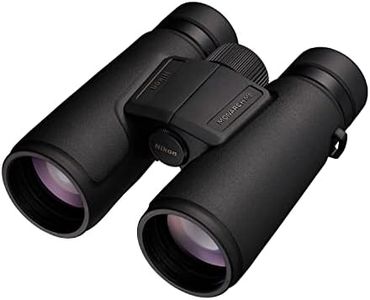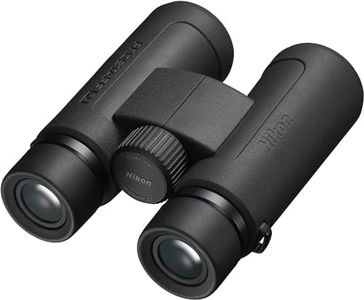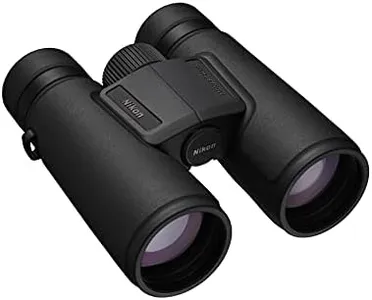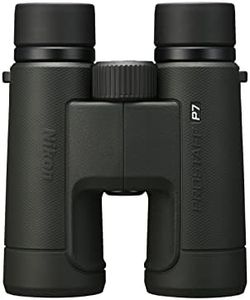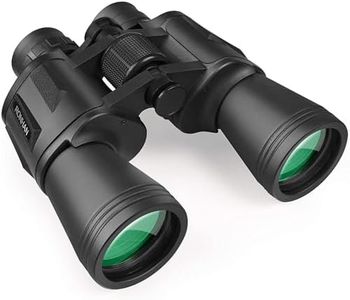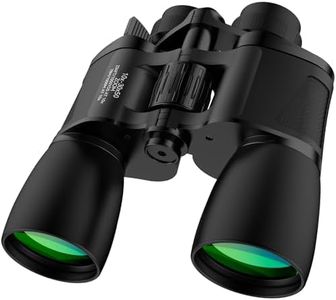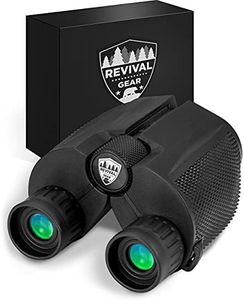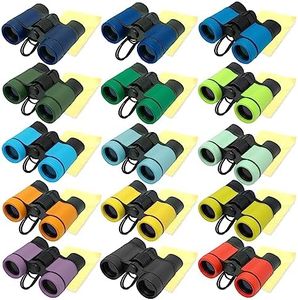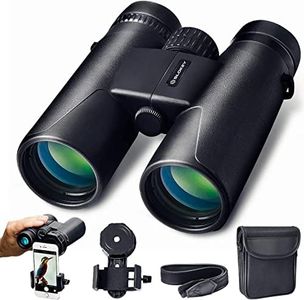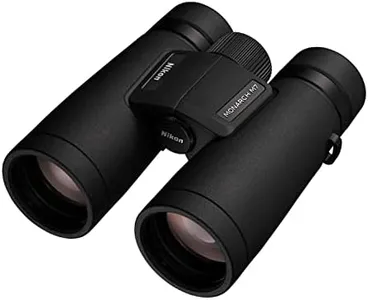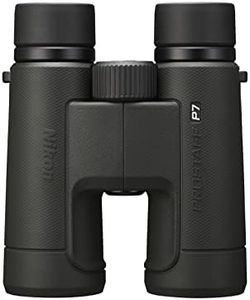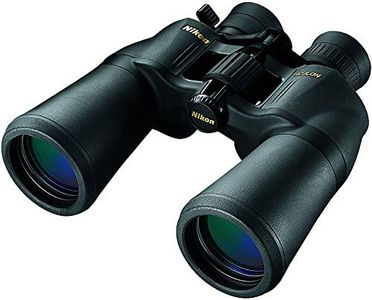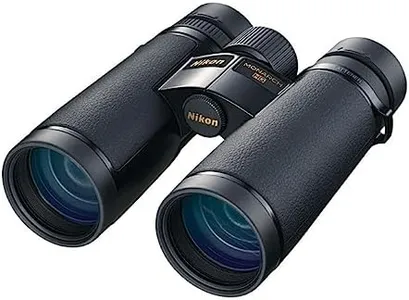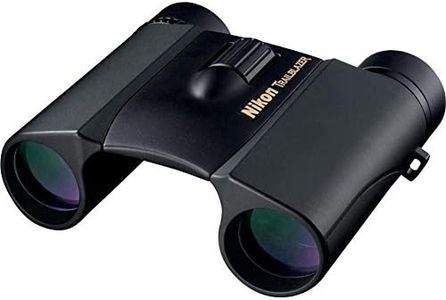10 Best Nikon Binoculars 2025 in the United States
Our technology thoroughly searches through the online shopping world, reviewing hundreds of sites. We then process and analyze this information, updating in real-time to bring you the latest top-rated products. This way, you always get the best and most current options available.

Our Top Picks
Winner
Nikon Monarch M5 12x42 Binocular | Waterproof, fogproof, Rubber-Armored Binocular with ED Glass, Long Eye Relief | Official Nikon USA Model
Most important from
72 reviews
The Nikon Monarch M5 12x42 binocular is a well-rounded option for nature enthusiasts, birdwatchers, or anyone in need of reliable optics. With a magnification of 12, it allows for clear distant viewing, while the 42mm objective lens diameter provides ample light for bright images in various conditions. The Extra-low Dispersion (ED) glass lenses enhance color accuracy and sharpness, making it ideal for detail-oriented observations. Its waterproof and fog-proof design adds to its functionality, allowing users to take it out in different weather conditions without worry.
One of the standout features is the long eye relief, which is beneficial for those who wear glasses, making it more comfortable to use over extended periods. The robust rubber-armored exterior not only provides a good grip but also adds a layer of shock resistance, which is great for outdoor activities.
While the binoculars are lightweight at 1.41 pounds, they may still feel a bit bulky for some users, especially during long treks. Additionally, the waterproof rating is decent but limited to 1 meter for 10 minutes, so it's not fully submersible, which may restrict use in extreme wet conditions.
Most important from
72 reviews
Nikon PROSTAFF P3 10x42 Binocular | Waterproof, fogproof, Rubber-Armored Full-Size Binocular, Wide Field of View & Long Eye Relief | Official Nikon USA Model
Most important from
831 reviews
The Nikon PROSTAFF P3 10x42 Binoculars are a strong option for outdoor enthusiasts and nature watchers. With a magnification of 10x and a 42 mm objective lens, they strike a good balance for activities like bird watching, stargazing, and attending outdoor events. The binoculars provide a wide field of view at 367 feet at 1,000 yards, making it easier to track moving subjects.
One of the standout features is their waterproof and fogproof design, which is beneficial for using them in various weather conditions. The rubber armor adds extra durability and helps ensure a solid grip. Weighing in at just over a pound, they are lightweight and convenient to carry, fitting easily into most bags.
The multilayer lens coatings enhance image quality by reducing glare and reflections, and they offer long eye relief of 15.7 mm, making them comfortable for users who wear glasses. This comes in handy for those who want to enjoy clear views without straining their eyes. There are a few limitations to consider; while they are rated to be waterproof and can be submerged up to 3.3 feet, they are not intended for prolonged underwater use, which could be a concern for some water sports enthusiasts. Additionally, while the binoculars perform well in many situations, those seeking more advanced features or higher-end optical performance may find that these don't quite meet their expectations.
Most important from
831 reviews
Nikon Monarch M7 8x42 Binoculars
Most important from
135 reviews
The Nikon Monarch M7 8x42 binoculars offer a solid combination of features suitable for outdoor enthusiasts who want clear, reliable optics. With 8x magnification and 42mm objective lenses, they strike a good balance between zoom power and light gathering, making them versatile for activities like birdwatching and hiking. The use of Extra-Low Dispersion glass helps reduce color distortion, so images appear sharp and natural. These binoculars are designed to handle tough conditions with a rubber-armored exterior to resist shocks and provide a comfortable grip. They are waterproof and nitrogen-filled, which means they can withstand brief submersion and won’t fog up easily, a big plus for changing weather. The locking diopter control lets you keep your personal focus setting steady, which is convenient during extended use. The twist-up eyecups suggest they’re comfortable for eyeglass wearers as well. At about 1.5 pounds, they are reasonably lightweight but still feel sturdy in hand.
The waterproof rating is limited to 1 meter for 10 minutes, so they’re not meant for heavy water exposure. Also, while 8x magnification is great for clarity and stability, users looking for more zoom might find it limiting. These binoculars present a dependable choice for casual to intermediate users who want quality optics with durable, weather-resistant build without jumping into professional-level gear.
Most important from
135 reviews
Buying Guide for the Best Nikon Binoculars
Choosing the right pair of Nikon binoculars can greatly enhance your viewing experience, whether you're bird watching, attending a sports event, or exploring nature. To make an informed decision, it's important to understand the key specifications and how they align with your needs. Here are the main specs to consider when selecting Nikon binoculars.FAQ
Most Popular Categories Right Now
